This post was compiled by Stephanie Porter, Illinois Soybean Association Outreach Agronomist & CCA, and Shelby Stoner, Illinois Soybean Association Agronomy intern
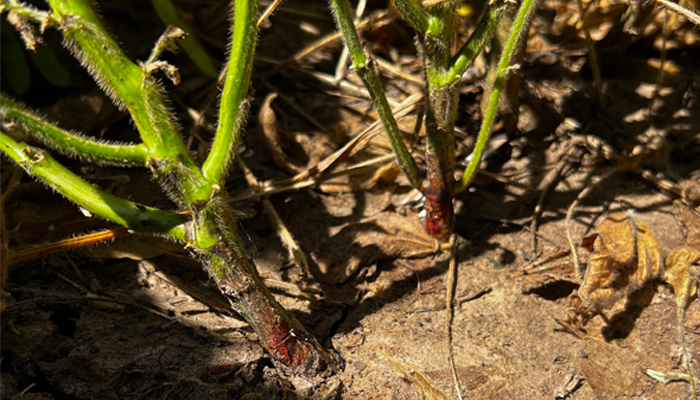
Red Crown Rot (Photo – Steven Clough, USDA-ARS)
Red Crown Rot was first detected in Illinois in 2017-18 in Pike County. Since then, it has been found throughout the state and we are continuing to learn more about this disease:
1.) We need to correctly identify Red Crown Rot.
2.) We want to continue to track where Red Crown Rot has been found in Illinois.
3.) We want to learn more about the spread of Red Crown Rot.
4.) We want to know more to learn how to control Red Crown Rot.
An important fact to note:

Foliar symptoms of Red Crown Rot (Photo – Abigail Peterson, Illinois Soybean Association Director of Agronomy)
Red Crown Rot is similar to sudden death syndrome (SDS). Infection of both diseases take place early in the season, after germination, but SDS favors cool/wet and Red Crown Rot favors warm/wet crop conditions during this period. In addition, both of these disease fungal pathogens send a toxin to the leaves after midseason rain, and this causes interveinal necrosis (yellow blotches between leaf veins).
Robert Bellm, retired U of I Extension, offers scouting tips:
- If you start to scout for Red Crown Rot, he says the R3 to R4 growth stage is the optimum growth stage to begin to diagnose this disease. The red fungal structures or perithecia may not yet be present on red lower stems early in the season.
- If you are scouting in mid-July to mid-August, do not expect to see disease symptoms from the road. If you are walking in a field, you may run across some chlorotic or necrotic leaves or wilting plants by way of single plants or patches.
- If it has been warm and there has been high moisture later in the growing season (after R3 growth stage), this causes a toxin to move up the plant to cause interveinal necrosis (yellow blotches between leaf veins). This occurs with other diseases, so it could be confused with Sudden Death Syndrome or Brown Stem Rot. Plants with Sudden Death Syndrome will drop their leaves. Red Crown Rot can also be confused with Phytophthora Root Rot as well as stem canker.
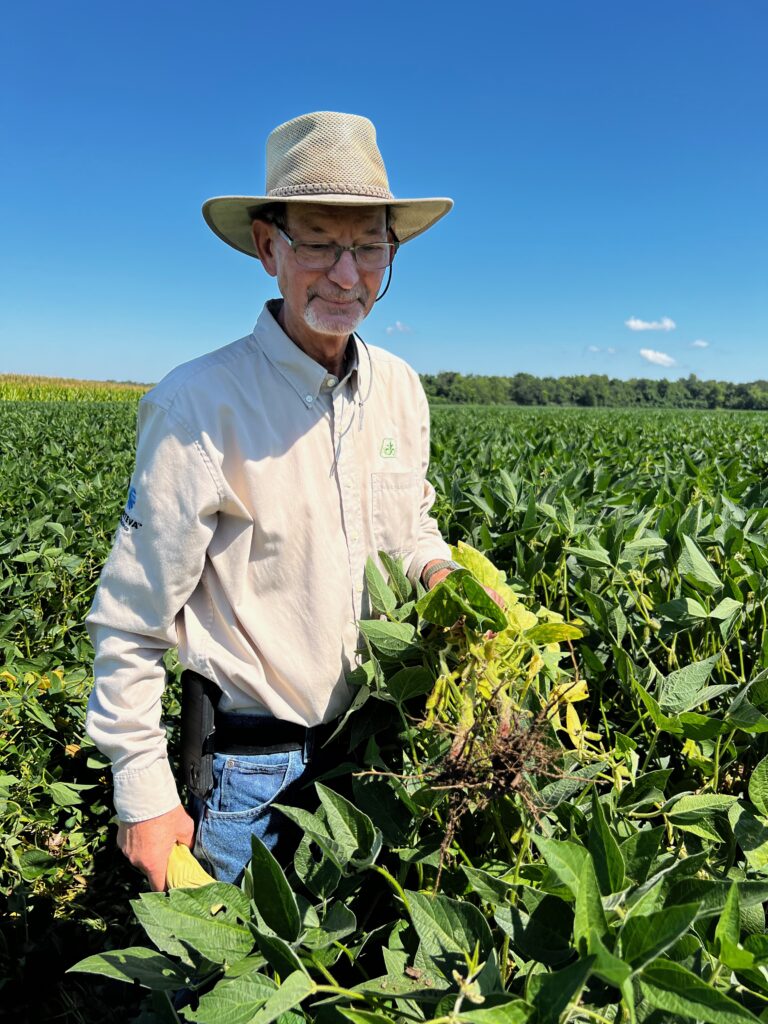
Robert Bellm, CCA, Brase Farms, Inc. (Photo courtesy of Steven Clough, USA-ARS)
“A couple of years ago, I was scouting for Red Crown Rot and found it in several fields belonging to the same grower. I came upon another one of his fields with a large area about 100 yards from the road that had foliar symptoms that looked exactly like all of the other Red Crown Rot fields. It would have been easy just to mark it down as another Red Crown Rot infected field, but instead, I managed to stumble across 100 yards of lodged, tangled beans. When I reached this suspect area, I found a half-acre area of soybeans with stem canker. Sudden Death Syndrome (SDS) and Red Crown Rot can be intermixed, so one might have to examine a lot of plants before finding one with Red Crown Rot.” – Robert Bellm
Diagnosing Red Crown Rot:
- Dig up the plant and look at the crown line or base of the plant where it meets the soil. With rot like this at the base, plants are easily removed if pulled from the ground.
- Look for reddening on the base of the stem or root. If there is moisture, you may also see red fungal structure or perithecia. The roots of the plant will appear rotted.
- Into August and September, the infected plant with Red Crown Rot will be dead and may be too deteriorated and very difficult to diagnose.
- Late into the season, the red on the root crown disappears and is replaced by a black rot.
Bellm adds, “I’m encouraged that people are actively scouting for Red Crown Rot, but I can’t overemphasize that the presence of foliar symptoms should only be used as a starting point. You really need to get down into the lower canopy to look for the diagnostic signs of the disease.”
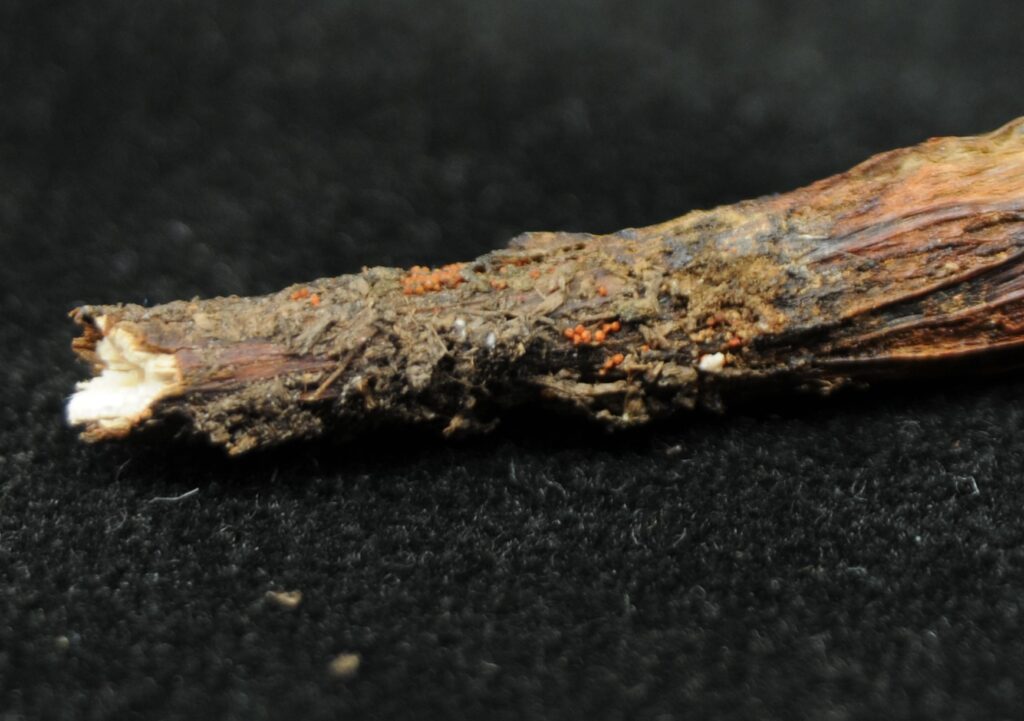
Photo – Steven Clough, USDA -ARS
Recent discovery has shown that Saltro seed treatment from Syngenta offers some proactiveness to halt the disease and have added Red Crown Rot to their label in AR, IA, IL, IN, KY, MO, TN. Other management tips would be added field drainage, crop rotation, and weed control. To date, there are no fungicides that show promise at controlling Red Crown Rot.
One of the ways that you can help is by sending plants with the possible Red Crown Rot disease to Steve Clough, USDA, Plant Pathologist at the University of Illinois Campus in Urbana. His group has been surveying isolates of Calonectria ilicicola or Red Crown Rot. He would like to help to determine the introduction and spread of this disease. For more information, go to Request for Red Crown Rot Samples.
Clough has been working with Robert Bellm, retired University of Illinois Extension specialist. Many of his samples have come from Madison and Piatt Counties to date. Sample diversity is a key factor in collecting this data, so he and his team need to perform correct and accurate data collection. We hope we do not find the disease, but if we do, we would appreciate sample submission from around the state. There has been a very, unusual distribution of Red Crown Rot across the U.S. This disease produces microsclerotia and these structures can be spread by wind, water, birds, and equipment.
Sources:
Robert Bellm
Dr. Carl Bradley
Photo Credits – Steven Clough, USDA-ARS and Abigail Peterson, Illinois Soybean Association

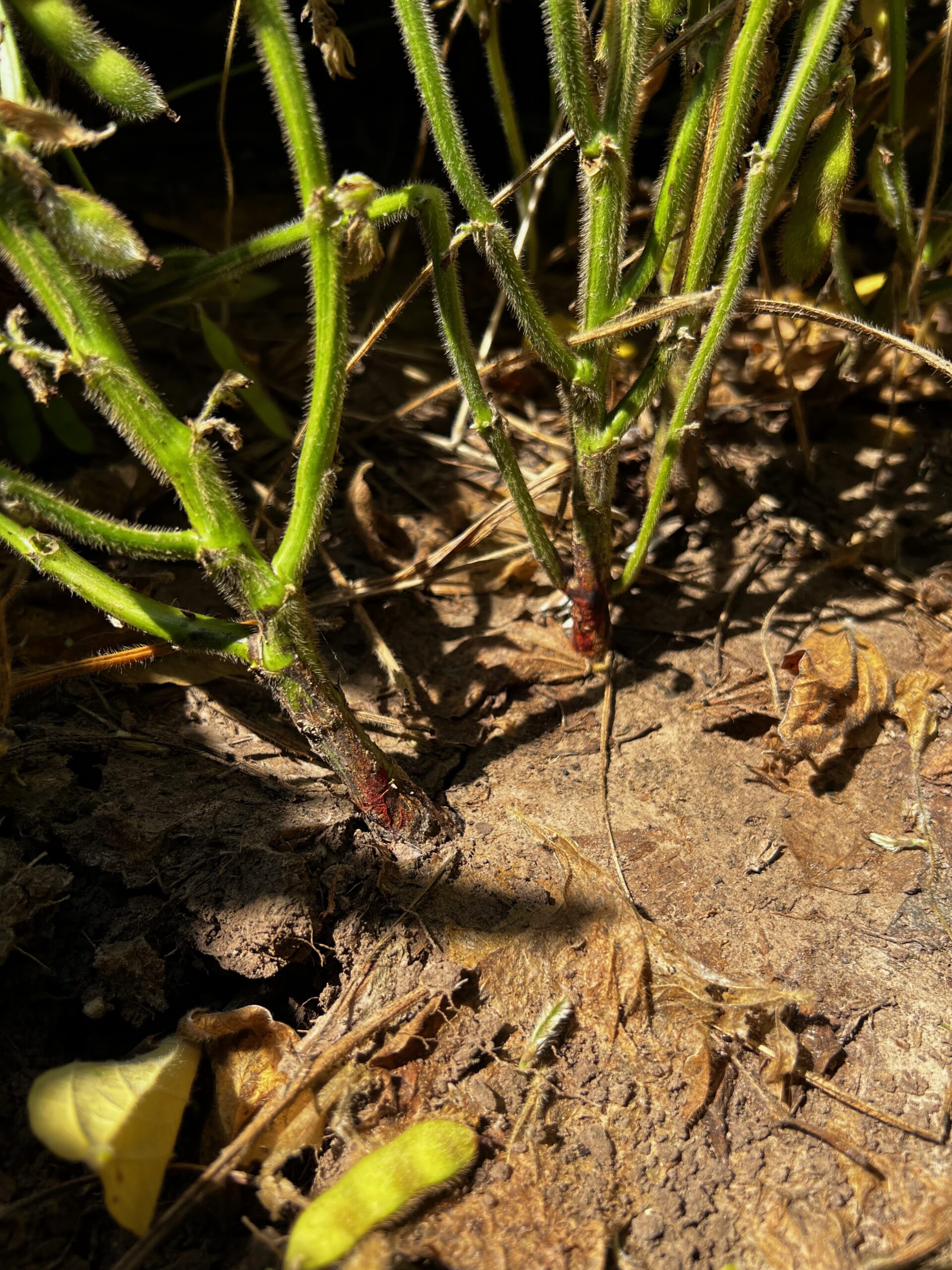
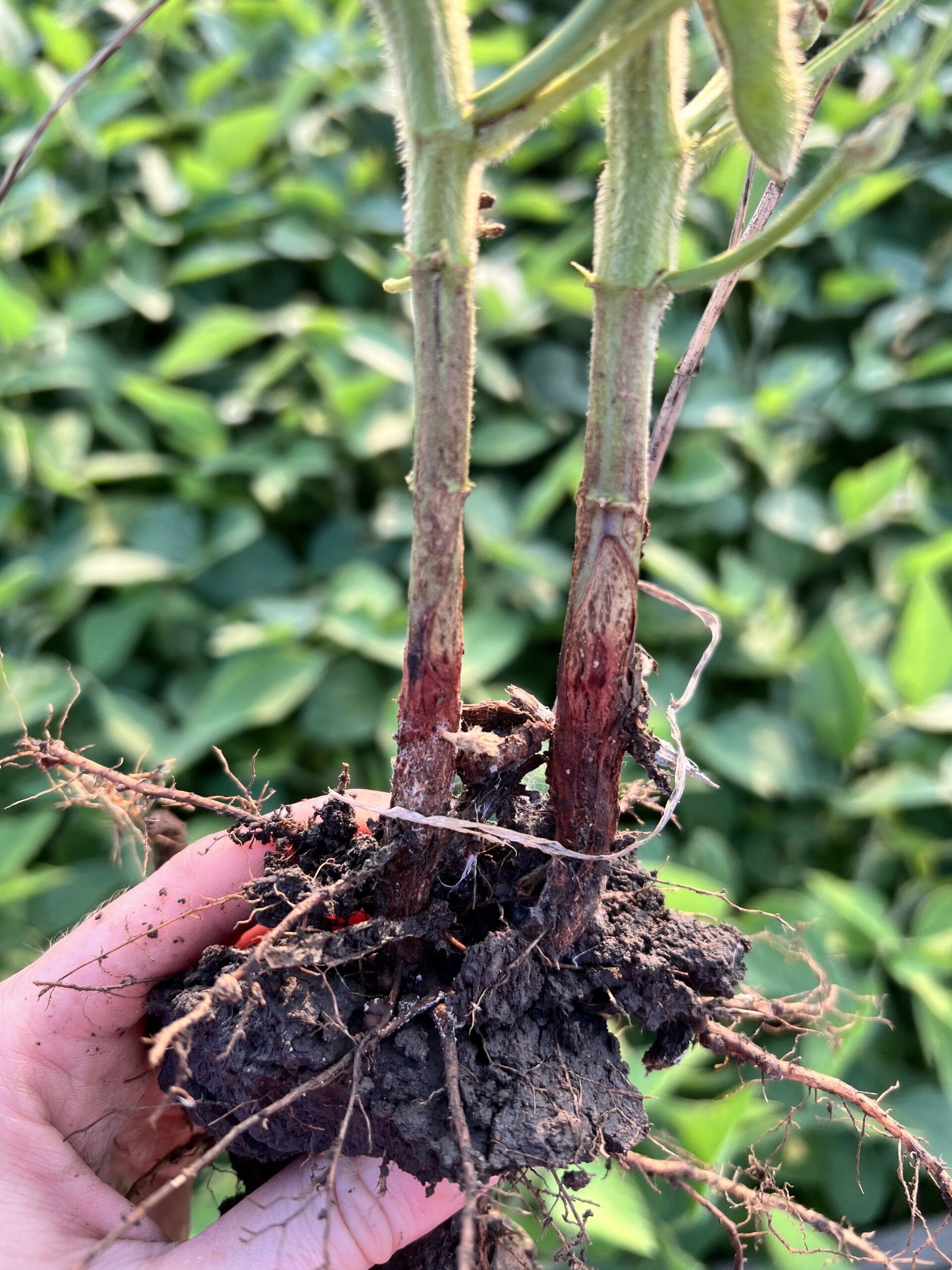

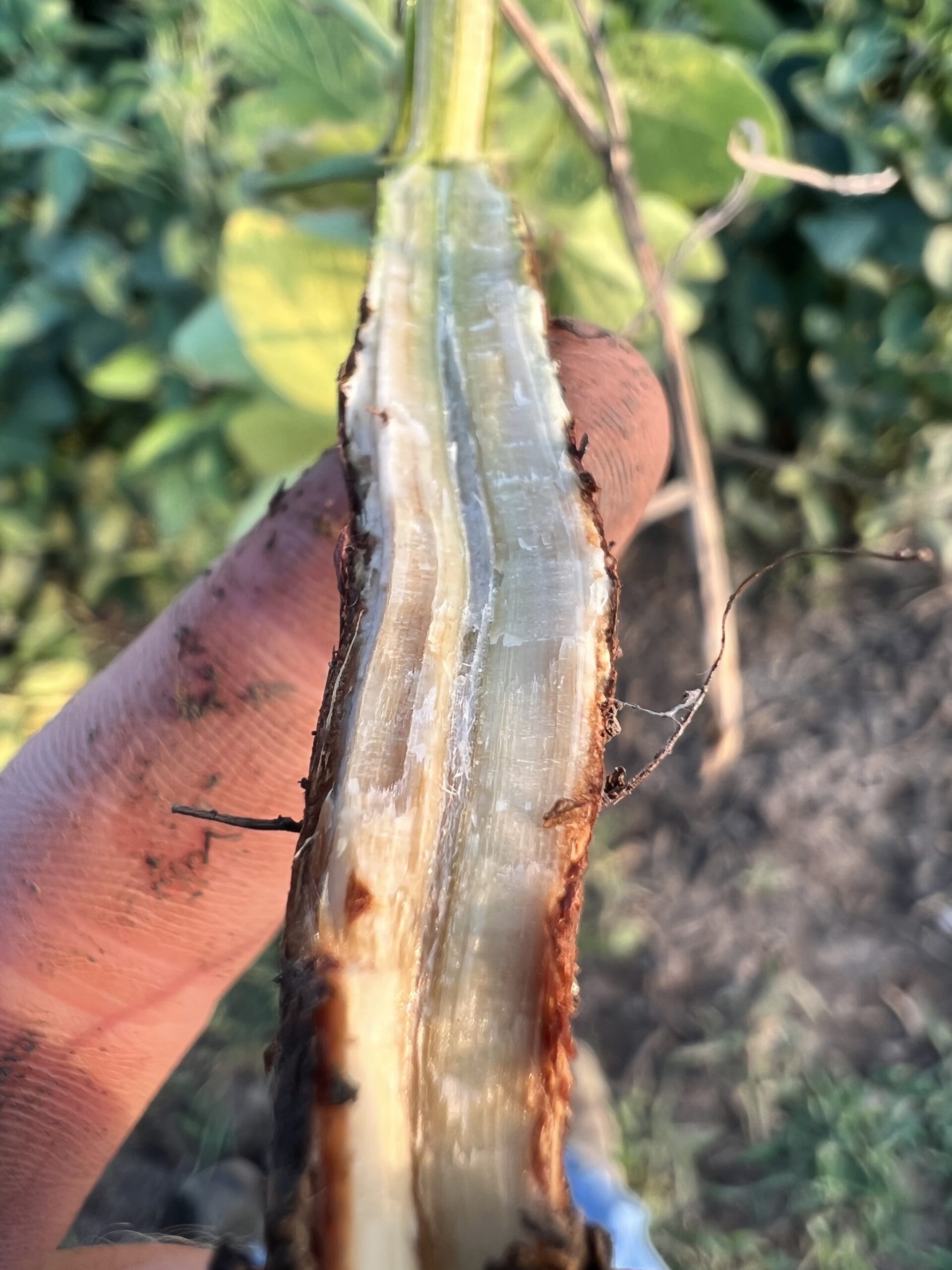
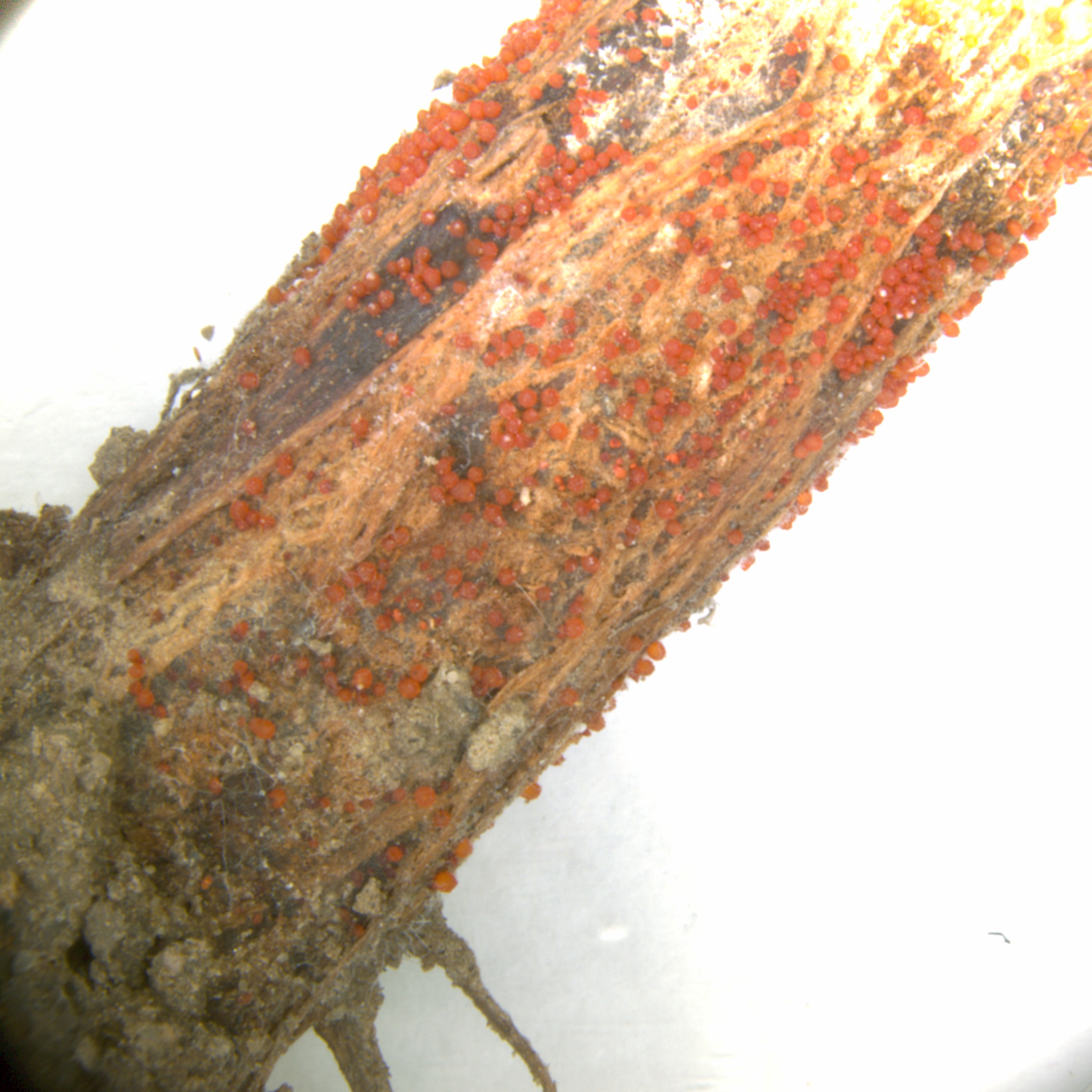

 and then
and then
Thanks Stephanie for the report. I was in Pike county yesterday (July 27, 2023) and my impression is that the drought might be accentuating the disease symptoms. When I visited Robert Bellm in Madison county in mid-August 2022, most of the plants seemed to still be fairly green or yellow, even if wilted. In Pike county yesterday, which is very dry this season, many infected plants were toasted, completely dead.